
It is indeed alarming to see that a great many people read the Bible for the exclusive reason of trying to discredit the text and humiliate God with a claim of many so-called “discrepancies” littering His Word. During my studies of the Bible, I have come to see that most if not all of these “discrepancies” are the result of either people not reading the Bible correctly, or they come to conclusions by reading the different translations or expositions of the Bible...
..., or reading this Holiest of Holy Books as if it is just another book on a shelf. Like Science needs some visual aids to see a lot of things that are hidden to the naked eye, one also needs to be inspired by the Holy Spirit to see the picture with the mind’s eye, while the physical eyes are only capable of reading the actual print.
The following are some of these so-called discrepancies among the resurrection accounts. Just notice how these “discrepancies” disappear like mist when the “sun” of God’s Spirit shine on them, and this goes for everywhere the mockers shout “inconsistency” when baffled by the Bible text. I use the KJV but with the original Strong’s Dictionary of Hebrew and Greek words where needed. QUESTION 1: What time did the women visit the tomb?

ANSWER: This is now a classic case of highlighting some parts of a verse and ignoring the rest. This is a recipe for prejudice. If this was a court case the judge would have dismissed all charges of “discrepancies” straight away with cost! Let us have a look.
Matthew: Keep in mind that the Jewish day starts at sunset. What you left out here was: “as it began to dawn toward the first day of the week…” This meant that the women went to the grave after sunset on Saturday, because the Jewish Sabbath ended at sunset and the first day of the week started at that same sunset. Mark: He confirms that the women went to the grave on Saturday evening. He also gives a little more information. He says that the woman bought some spices (they could have done that only after the Sabbath was gone) and went with it to the grave in order to prepare the body correctly according to Jewish customs and by Jesus’ loved ones. When they arrived at the grave it must have been dark and there was nothing else for them to do but to return home and wait for sunrise the following morning. This is then what Mark 16:2 confirms. Luke: He then again confirms Matthew and Mark, saying the women went to the grave “very early… bringing the spices…” John: Here was Mary Magdalene on her own, going to the grave “when it was yet dark”. If one understands the special relationship between Jesus and Mary Magdalene, one would have better understanding of what John writes about. QUESTION 2: Who were the women
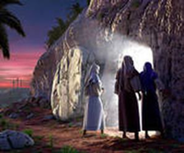
ANSWER: This one is easy. Mary Magdalene and Mary, the mother of Jesus went to the grave on Saturday evening. Mark confirms this. Luke gives some added information: The two women must have taken some of their women friends with them who did not go nearer to the grave where they waited until they came back, told them the story, and then they all went together to the Apostles. John is focusing on telling what transpired between Jesus and Mary Magdalene.
QUESTION 3: What was their purpose?

ANSWER: Matthew’s version does not need explaining anymore. They went to see the grave but could not do anything more because (Saturday) night was on them. Mark and Luke then confirm that they had already seen the tomb the evening before (Saturday) and were ready the Sunday morning to do the work. What John said was also true. The women did not know that Joseph of Arimathea and Nicodemus already spiced the Body of Jesus when He was taken from the grave. One must remember the severity of the law. The women must have gone home to wait for the special Sabbath (John 19:31; Leviticus 23:6) as well as the regular Sabbath to pass. The two men took the chance to prepare the Body as the special Sabbath was not as severe as the regular Sabbath, but obviously the women did not.
QUESTION 4: Was the tomb open when they arrived?
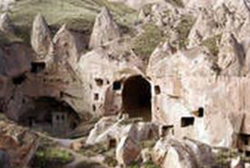
ANSWER: Matthew: Of course, No! The tombstone was still firmly in place when the two women went there the Saturday evening after sunset. Mark: Of course, Yes! The stone was rolled away overnight, and the grave would have been open the following morning. Luke and John: Of course, Yes! They described what happened the Sunday morning and their testimonies are in line with that of Mark.
QUESTION 5: Who was at the tomb when they arrived?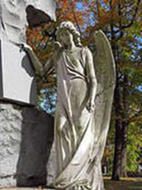
QUESTION 6: Where were these messengers situated?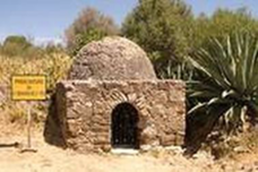
ANSWER: Matthew: We already discussed this one. This angel was beheld by the “keepers”. Mark, Luke and John: One must remember that these angels were not little painted cement monuments found at churches. They were REAL angels, alive, capable of sitting, walking, talking, flying, appearing, disappearing and what more. Do not be surprised that they were not in fixed positions until the whole drama concluded. QUESTION 7: What did the messenger(s) say?
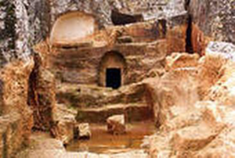
ANSWER: Matthew, Mark and Luke: One must really be grateful for these differences in relating what transpired. Instead of discarding it as contradicting each other (which they do not) but instead see them as adding pieces to a greater jigsaw puzzle. Remember that these accounts were not recorded by any modern methods or even immediately after it happened. They were only human beings and to remember EXACTLY what was said would have been difficult for even us today. However, they did their best and today, after nearly 2000 years, we can see the picture. One must take all these accounts together and be grateful that Luke adds on something really unsynoptic.
ANSWER: John gives an account of the conversation between the risen Jesus and Mary Magdalene. QUESTION 8: Did the women tell what happened?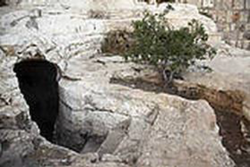
ANSWER: Here the four Gospel writers are all in harmony. Mark seemingly is playing a false note, but not really. He says the women were “afraid”. The message they had was certainly not meant for “any man” (or as we say for all ears) but for the disciples and especially the Apostles. QUESTION 9: When Mary returned from the tomb, did she know Jesus had been resurrected?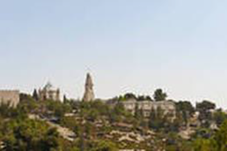
ANSWER: I nearly said, "what a silly question!" Here the synoptic Gospels are again in harmony as we would expect from them. I cannot find the place where you say John is out of rhythm here. John describes how Mary first went to the grave by herself, discovered the stone rolled away, must have thought it was the work of grave-robbers and without hesitation fled to summon John and Peter. Then John describes the special conversation Jesus and Mary had. Yes, Mary indeed knew that Jesus had been resurrected, and verse 18 confirms this and that she went to tell the others about it: “Mary Magdalene came and told the disciples that she had seen the Lord, and that he had spoken these things unto her.” QUESTION 10: When did Mary first see Jesus?
ANSWER: We discussed this in the previous point. John describes that Mary met Jesus after he and Peter had their rendezvous with the grave and left again. This was before she returned to tell the disciples about her meeting with Jesus (verse 18) QUESTION 11: Could Jesus be touched after the resurrection?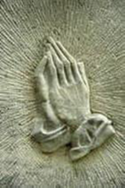
ANSWER: In Matthew, the women knelt before the risen Jesus, worshipped Him and touched His feet. In John 20:27 Jesus extends the invitation to a doubting Thomas to “Reach hither thy finger, and behold my hands; and reach hither thy hand, and thrust it into my side: and be not faithless, but believing.” One can be 100% certain that Thomas did not in fact accept the invitation. He would have been too ashamed for that. All he did was “answered and said unto him, My Lord and my God”. In Jesus’ answer one can see that Thomas indeed did not touch Him: “Thomas, because thou hast seen me, thou hast believed…” QUESTION 12: After the women, to whom did Jesus first appear?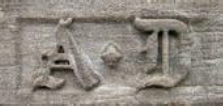
ANSWER: To answer this one there is one little distinguishing act we will first have to do: There is a difference between the “disciples” of Jesus and the “twelve” also called the “Apostles”. The text of Luke 6:13 confirms that Jesus had many more disciples who also travelled together with the chosen Twelve: “And when it was day, he called unto him his disciples: and of them he chose twelve, whom also he named apostles”. That indicates when only mention is made of the “Twelve” it does not mean that some of the other disciples were not also present most of the times. After the demise of Judas Iscariot, it was only natural that they would refer to the Apostles as the “Eleven”, even though other disciples may have been present. Then after choosing a substitute for Judas, they would revert to calling them the “Twelve”. Now it becomes easy to discern to whom of the men Jesus appeared first. When Matthew says “the Eleven” he means the Apostles, no matter if they were not all present. If any were absent, the writer would mention the name/s. Mark and Luke confirms that the two on their way to Emmaus were not Apostles but from the other disciples and that Emmaus was in the rural area a little distance away from Jerusalem. John still refers to the Apostles as “the Twelve” but points out that Thomas was absent and not even mentioning Judas. To him and the others the “Twelve” or the “Eleven” was just referring to the Apostles and not whether all were present. Paul’s mentioning that Jesus “appeared to the Twelve” was thus true not only in this sense, but also because the Apostles chose another disciple to take the place of Judas Iscariot, and it can be certain that disciple was also in the background when Jesus appeared to the “Eleven” (see Acts 1:21-22) QUESTION 13: Where did Jesus first appear to the disciples? |
Ben WilliamsThe Bible had for too long been the subject of unwarranted ridicule. I aim to correct that. Amen Archives
March 2017
Categories |
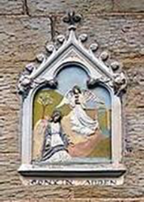

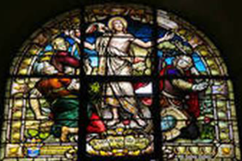

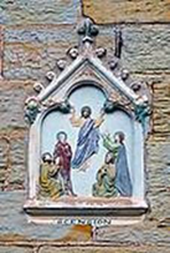
 RSS Feed
RSS Feed